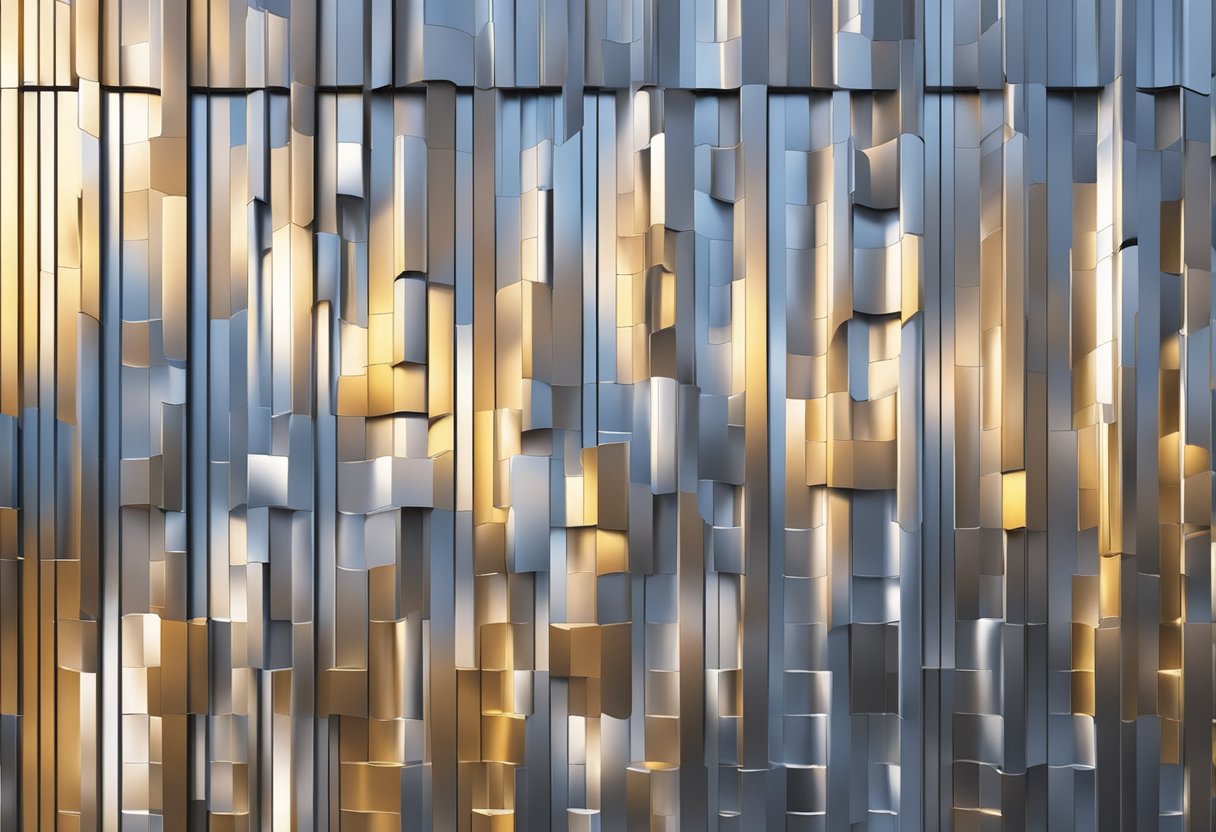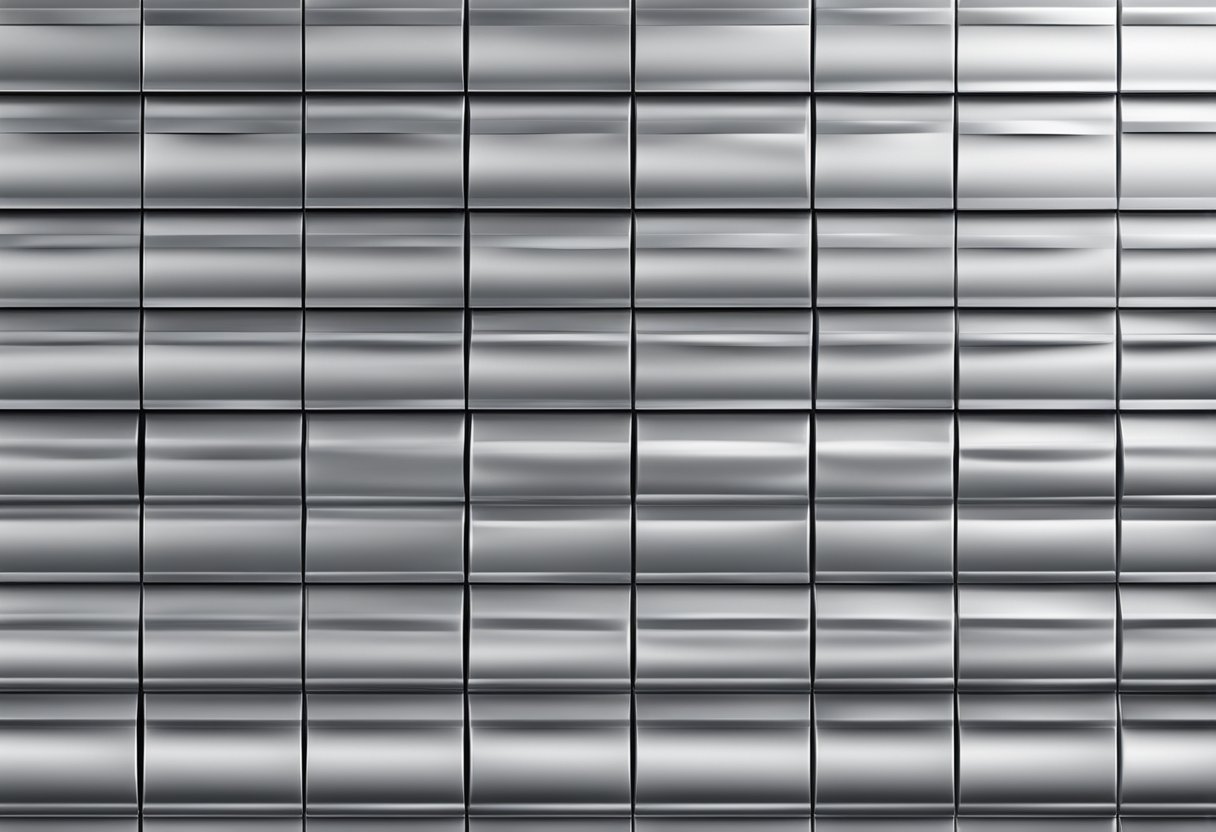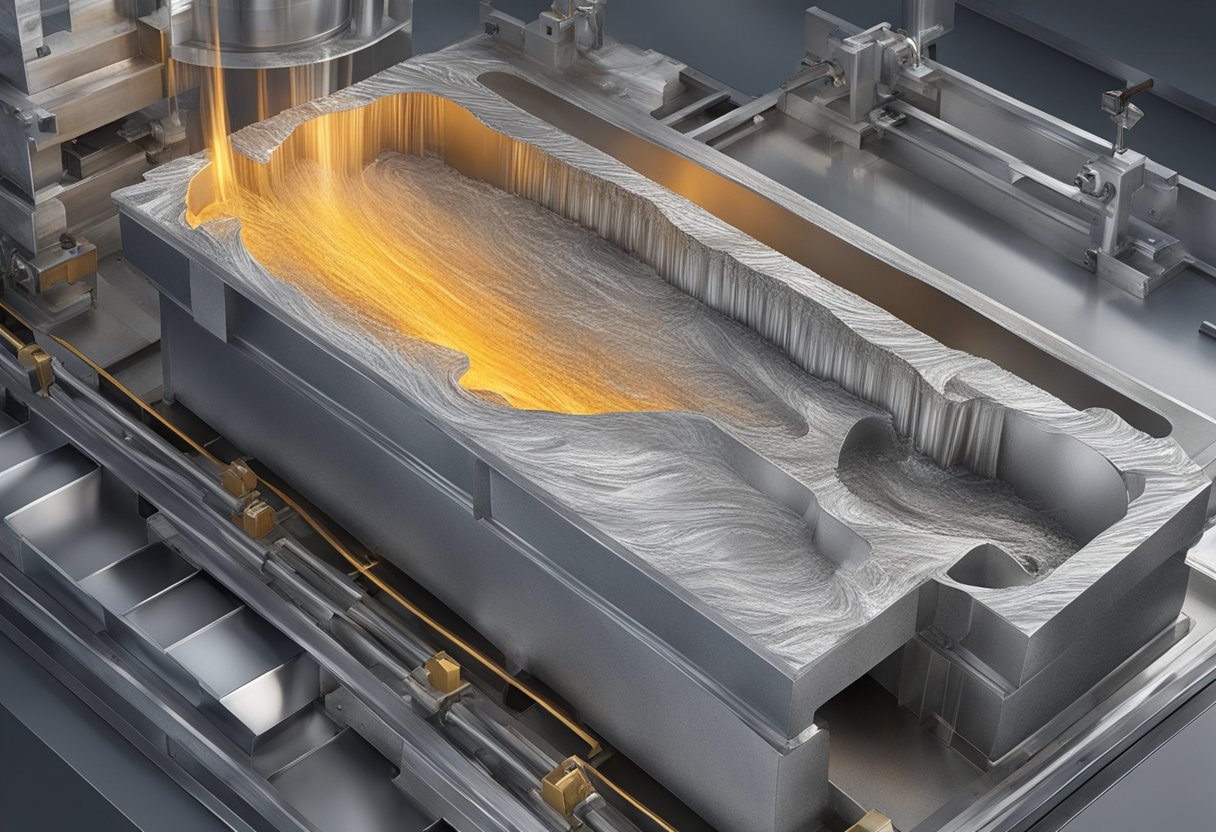Textured aluminum panel are a popular choice for architects and designers looking to create a modern and sleek aesthetic in their projects. These panels are made from high-quality aluminum and feature a textured surface that adds depth and interest to any building facade. The panels are available in a range of colors and finishes, making them a versatile option for a wide variety of applications.

One of the key benefits of textured aluminum panels is their durability. Made from high-quality materials, these panels are designed to withstand the elements and maintain their appearance over time. They are resistant to corrosion, fading, and weathering, making them an ideal choice for use in outdoor environments.
Another advantage of textured aluminum panels is their versatility. They can be used in a wide variety of applications, including exterior cladding, interior wall panels, and decorative features. The panels can be cut to size and shaped to fit any design requirements, and they can be installed using a range of different methods, including adhesive bonding, mechanical fastening, and clip systems. Overall, textured aluminum panels are a versatile and durable option for architects and designers looking to create a modern and sleek aesthetic in their projects.
Basics of Textured Aluminum Panels

Textured aluminum panels are a popular choice for both residential and commercial applications due to their durability and aesthetic appeal. These panels are made by embossing the surface of the aluminum sheet with a variety of patterns, creating a textured surface that adds depth and visual interest to any building façade.
One of the key benefits of textured aluminum panels is their ability to withstand harsh weather conditions. The textured surface helps to hide any scratches or dents that may occur, while the aluminum material itself is resistant to rust and corrosion. This makes textured aluminum panels an ideal choice for buildings located in areas with high levels of precipitation or saltwater exposure.
In addition to their durability, textured aluminum panels are also highly customizable. They can be painted in a variety of colors to match any design scheme, and can be cut to any size or shape to fit any building façade. This makes them a versatile choice for architects and designers looking to create a unique look for their building.
Overall, textured aluminum panels are an excellent choice for any building project that requires a durable, customizable, and visually appealing exterior cladding. With their ability to withstand harsh weather conditions and their endless design possibilities, they are sure to be a popular choice for years to come.
Manufacturing Processes

Rolling
Textured aluminum panels are manufactured through a process known as rolling. This process involves passing the aluminum sheet through a series of rollers that compress and stretch the material to the desired thickness. The rolling process is essential in the production of textured aluminum panels as it determines the final thickness and surface texture of the panels.
Embossing
Embossing is another critical process in the production of textured aluminum panels. The process involves creating patterns on the surface of the aluminum sheet by pressing it between two rollers. The rollers have a pattern on their surface, which is transferred onto the aluminum sheet. The embossing process can create a wide range of patterns and textures on the aluminum surface, making it a popular choice for decorative and architectural applications.
Anodizing
Anodizing is a process used to enhance the properties of textured aluminum panels. The process involves immersing the aluminum sheet in an electrolytic solution and passing an electric current through it. This creates a layer of oxide on the surface of the aluminum, which improves its corrosion resistance, durability, and aesthetic appeal. Anodizing also allows for the customization of the color and finish of the aluminum surface, making it a popular choice for architectural and decorative applications.
In summary, textured aluminum panels are manufactured through a combination of rolling, embossing, and anodizing processes. These processes work together to create panels with unique textures, patterns, and finishes that are suitable for a wide range of applications.
Types of Textures
Textured aluminum panels come in a variety of textures, each with its own unique appearance and functionality. Here are some of the most common types of textures used in aluminum panels:
Stucco
Stucco texture is a popular choice for textured aluminum panels. It is a rough, raised texture that resembles the finish of stucco on a building. This texture is created by pressing a pattern onto the surface of the aluminum panel, giving it a three-dimensional appearance. Stucco texture is often used in architectural applications, as it adds depth and interest to a building’s façade.
Diamond Plate
Diamond plate texture is a classic pattern that is often used in industrial and commercial applications. It is a raised, diamond-shaped pattern that provides a non-slip surface, making it ideal for use in areas where slip-resistance is important. Diamond plate texture is created by embossing the surface of the aluminum panel with a diamond-shaped pattern.
Tread
Tread texture is a common pattern used in aluminum panels for flooring and stair treads. It is a raised, linear pattern that provides a non-slip surface, making it ideal for use in areas where slip-resistance is important. Tread texture is created by embossing the surface of the aluminum panel with a series of parallel lines.
Overall, the texture of an aluminum panel can greatly impact its appearance and functionality. Whether you are looking for a rough, three-dimensional texture like stucco, a classic diamond plate pattern, or a linear tread pattern, there is a textured aluminum panel that will meet your needs.
Applications and Uses
Textured aluminum panels have a wide variety of applications and uses due to their durability, versatility, and aesthetic appeal. Here are some common applications and uses of textured aluminum panels:
Architectural Cladding
Textured aluminum panels are commonly used as cladding material for buildings. They provide a modern and sleek look to the exterior of a building, while also protecting it from the elements. Textured aluminum panels can be used for both residential and commercial buildings, and are available in a variety of colors and finishes.
Decorative Purposes
Textured aluminum panels are also used for decorative purposes. They can be used as wall panels, ceiling panels, or even as art pieces. Textured aluminum panels are available in a variety of patterns, textures, and finishes, making them a versatile choice for any decorative project.
Functional Surfaces
Textured aluminum panels are also used for functional surfaces. They can be used as flooring, countertops, or even as a surface for outdoor furniture. Textured aluminum panels are durable and resistant to scratches and stains, making them a practical choice for high-traffic areas.
Overall, textured aluminum panels are a versatile and durable material that can be used for a variety of applications and uses. Whether you need cladding material for a building, a decorative piece for your home, or a functional surface for your business, textured aluminum panels are a great choice.
Installation Techniques
Mechanical Fastening
Textured aluminum panels can be mechanically fastened using screws or rivets. When selecting fasteners, it is important to consider the thickness of the panel and the substrate it will be attached to. The fasteners should be long enough to penetrate through the panel and into the substrate, but not so long that they damage the panel.
It is recommended to use stainless steel fasteners to prevent corrosion and ensure long-lasting performance. The fasteners should be spaced evenly along the panel and located at least 1 inch from the edge to prevent cracking.
Adhesive Bonding
Adhesive bonding is another option for installing textured aluminum panels. This method involves using an adhesive to bond the panel to the substrate. It is important to select an adhesive that is compatible with both the panel and the substrate.
Before applying the adhesive, both the panel and the substrate should be thoroughly cleaned and dried to ensure proper adhesion. The adhesive should be applied evenly to the back of the panel using a notched trowel. The panel should then be pressed firmly into place and held in position until the adhesive sets.
It is important to follow the adhesive manufacturer’s instructions for mixing and application to ensure a strong and durable bond. Adhesive bonding is a good option for installations where mechanical fasteners would be unsightly or impractical.
Advantages of Textured Aluminum Panels
Textured aluminum panels are becoming increasingly popular in the construction industry due to their unique features and benefits. Here are some advantages of using textured aluminum panels:
Durability
Textured aluminum panels are highly durable and resistant to wear and tear, making them ideal for use in high-traffic areas. They are also resistant to corrosion, which makes them ideal for use in harsh environments.
Aesthetics
Textured aluminum panels can be customized to suit any design requirement. They come in a variety of colors, finishes, and textures, making them an ideal choice for architects and designers who want to create a unique look for their building.
Lightweight
Textured aluminum panels are lightweight, which makes them easy to install and handle. They also reduce the overall weight of the building, which can result in cost savings.
Low Maintenance
Textured aluminum panels are easy to maintain and require minimal cleaning. They do not require painting or sealing, which reduces maintenance costs.
Energy Efficiency
Textured aluminum panels have excellent thermal performance, which helps to reduce energy consumption. They also reflect sunlight, which reduces the amount of heat that is absorbed by the building.
Overall, textured aluminum panels are a versatile and durable option for architects and builders who want to create a unique and functional building.
Maintenance and Care
Cleaning
Textured aluminum panels are designed to be low maintenance and easy to clean. Regular cleaning is recommended to keep the panels looking their best. The frequency of cleaning depends on the location and exposure of the panels. In general, it is recommended to clean the panels at least once a year.
To clean the panels, use a soft cloth or sponge and a mild detergent solution. Avoid using abrasive cleaners, steel wool, or scouring pads as they can scratch the surface of the panels. Rinse the panels thoroughly with clean water and dry with a soft cloth or towel.
Repairs
Textured aluminum panels are durable and resistant to damage, but accidents can happen. If a panel is damaged, it is important to repair it as soon as possible to prevent further damage.
Minor scratches and dents can be repaired using a touch-up paint or filler kit. Follow the manufacturer’s instructions carefully and ensure that the repair is properly cured before exposing it to the elements.
For more serious damage, it may be necessary to replace the panel. Contact a professional installer or the manufacturer for guidance on how to replace the panel.
Regular maintenance and prompt repairs can help to extend the life of textured aluminum panels and keep them looking their best for years to come.
Sustainability and Recycling
Textured aluminum panels are not only aesthetically pleasing and durable but also sustainable. Aluminum is one of the most abundant metals on earth and can be recycled indefinitely without losing its quality. The recycling process of aluminum uses only 5% of the energy required to produce new aluminum from raw materials, making it an energy-efficient and environmentally friendly process.
Textured aluminum panels are often made from recycled aluminum, which significantly reduces the carbon footprint of the manufacturing process. In addition, the panels themselves can be recycled at the end of their lifespan, further reducing waste and environmental impact.
Furthermore, the durability and longevity of textured aluminum panels reduce the need for frequent replacements, which also contributes to sustainability. This reduces the amount of waste generated and the resources required for manufacturing and installation.
Overall, textured aluminum panels are a sustainable and environmentally conscious choice for architectural and design applications. By using recycled materials and promoting recycling at the end of their lifespan, they contribute to a more sustainable future.
Industry Standards and Specifications
ASTM International
The American Society for Testing and Materials (ASTM) is an international organization that develops and publishes technical standards for a wide range of materials, products, systems, and services. The ASTM International standard specification for textured aluminum panel is ASTM B209. This specification covers aluminum and aluminum-alloy flat sheet, coiled sheet, and plate in various alloys and tempers. It also covers aluminum-alloy extruded structural shapes, tube and pipe, and wire and bar.
The ASTM B209 specification includes requirements for chemical composition, mechanical properties, dimensions, tolerances, surface characteristics, and other relevant factors. This standard is widely recognized and accepted in the industry as a reliable and consistent reference for textured aluminum panel.
ISO Standards
The International Organization for Standardization (ISO) is a non-governmental organization that develops and publishes international standards for various industries and sectors. The ISO standard for textured aluminum panel is ISO 209:2017. This standard specifies the general requirements for wrought aluminum and aluminum alloy sheet, strip, and plate for general engineering applications.
The ISO 209:2017 standard includes requirements for chemical composition, mechanical properties, dimensions, tolerances, surface characteristics, and other relevant factors. This standard is widely recognized and accepted in the industry as a reliable and consistent reference for textured aluminum panel.
In summary, the ASTM International and ISO standards provide comprehensive and reliable guidelines for the production, testing, and evaluation of textured aluminum panel. These standards ensure that the quality, performance, and safety of textured aluminum panel meet the requirements and expectations of the industry and the customers.



